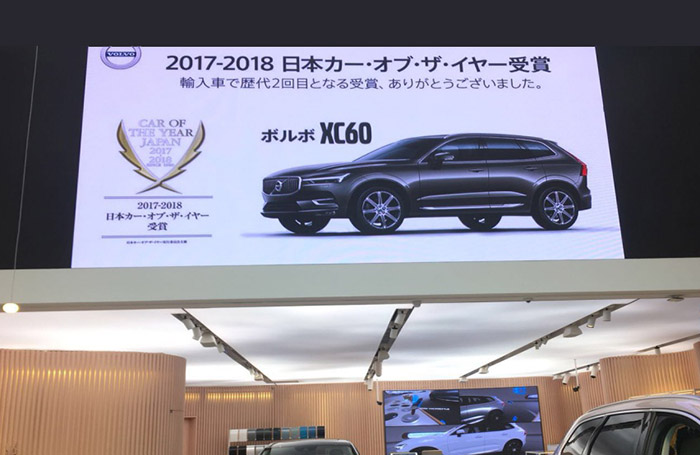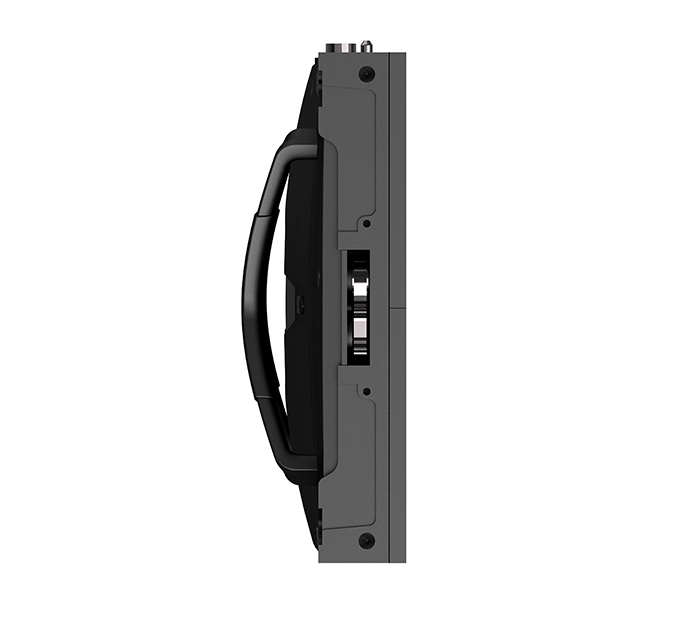Two major functions of singing: equalization and amplification.
Equalization
Principle: When recording a vinyl record, the record company first needs to mark a groove on the side of the turntable to record the sound. The amplitude of this channel groove is closely related to the frequency of the sound. A relatively simple explanation is that the treble amplitude is small and the bass amplitude is large. At the time of the emergence of vinyl records, due to technical limitations, there is often a problem when recording a record - the bass amplitude is too large and occupies too much disc area, resulting in a greatly shortened recordable time, but at this time Because the amplitude of the high-pitched part is too small, it is easy to cause distortion of the sound reproduction. In order to solve this problem, the equalization method has appeared, that is, suppressing the low-frequency attenuation by reducing the amplitude when recording the record, prolonging the recordable time, and simultaneously amplifying the amplitude to improve the medium-high frequency band, and maintaining the balanced physical characteristics during recording; When playing a record, the opposite is true, the equalization curve is restored, that is, the high frequency is raised to raise the low frequency, and the problem of uncoordination between the previous high and low sound amplitudes is effectively solved by this method.
RIAA, this is the English Recording Industry Association's English abbreviation (RIAA, Recording Industry Association of America). In the early days of LP's prevalence, the vinyl records introduced by various record companies all had their own equalization curves. In 1965, the American Recording Industry Association unifies various equalization curves to standardize the playback specifications of vinyl records, and supplemented this specification in 1978, which also prompted the production of major manufacturers in various countries. Cathode amplifiers generally use a consistent equalization curve. Since this phono amplifier is called RIAA phono amplifier
enlarge
In the vinyl system, the so-called preamplifiers are mostly designed for use with turntables or other sources that require a high level of output. The level signal output of the cartridge is generally around 3mV, which does not meet the need for a level output of a few volts when playing a vinyl record. At this point, the output of the cartridge is raised to a high level by the phono amplifier , so that the replay of the sound becomes possible.
In addition, it should be mentioned here that the level output of the moving magnetic pickup is about 3mV, and the moving coil cartridge is only about one-third of it, which causes the amplification of the MC cartridge to undergo two amplification processes. . At this time, the so-called front preamp and booster are used to make the level output of the MC cartridge reach the level of the MM cartridge. But if the phono amplifier can accept both the MM cartridge and the MC cartridge, then the front preamp and booster are not needed.
Since the level signal output from the pickup in the vinyl system is lower than that of the ordinary CD player and tape recorder, if a real replay of the sound is to be realized, a special frequency equalization function must be added to the playback system. The preamplifier, this is the Phono Amplifier. The magnetoelectric conversion system, which mainly acts on the cartridge, sings the level of the output in the conversion system to a higher level, thereby making the replay of the sound possible.
Two major functions of singing: equalization and amplification.
Equalization
Principle: When recording a vinyl record, the record company first needs to mark a groove on the side of the turntable to record the sound. The amplitude of this channel groove is closely related to the frequency of the sound. A relatively simple explanation is that the treble amplitude is small and the bass amplitude is large. At the time of the emergence of vinyl records, due to technical limitations, there is often a problem when recording a record - the bass amplitude is too large and occupies too much disc area, resulting in a greatly shortened recordable time, but at this time Because the amplitude of the high-pitched part is too small, it is easy to cause distortion of the sound reproduction. In order to solve this problem, the equalization method has appeared, that is, suppressing the low-frequency attenuation by reducing the amplitude when recording the record, prolonging the recordable time, and simultaneously amplifying the amplitude to improve the medium-high frequency band, and maintaining the balanced physical characteristics during recording; When playing a record, the opposite is true, the equalization curve is restored, that is, the high frequency is raised to raise the low frequency, and the problem of uncoordination between the previous high and low sound amplitudes is effectively solved by this method.
RIAA, this is the English Recording Industry Association's English abbreviation (RIAA, Recording Industry Association of America). In the early days of LP's prevalence, the vinyl records introduced by various record companies all had their own equalization curves. In 1965, the American Recording Industry Association unifies various equalization curves to standardize the playback specifications of vinyl records, and supplemented this specification in 1978, which also prompted the production of major manufacturers in various countries. Cathode amplifiers generally use a consistent equalization curve. Since this phono amplifier is called RIAA phono amplifier
enlarge
In the vinyl system, the so-called preamplifiers are mostly designed for use with turntables or other sources that require a high level of output. The level signal output of the cartridge is generally around 3mV, which does not meet the need for a level output of a few volts when playing a vinyl record. At this point, the output of the cartridge is raised to a high level by the phono amplifier , so that the replay of the sound becomes possible.
In addition, it should be mentioned here that the level output of the moving magnetic pickup is about 3mV, and the moving coil cartridge is only about one-third of it, which causes the amplification of the MC cartridge to undergo two amplification processes. . At this time, the so-called front preamp and booster are used to make the level output of the MC cartridge reach the level of the MM cartridge. But if the phono amplifier can accept both the MM cartridge and the MC cartridge, then the front preamp and booster are not needed.
Since the level signal output from the pickup in the vinyl system is lower than that of the ordinary CD player and tape recorder, if a real replay of the sound is to be realized, a special frequency equalization function must be added to the playback system. The preamplifier, this is the Phono Amplifier. The magnetoelectric conversion system, which mainly acts on the cartridge, sings the level of the output in the conversion system to a higher level, thereby making the replay of the sound possible.
Two major functions of singing: equalization and amplification.
Equalization
Principle: When recording a vinyl record, the record company first needs to mark a groove on the side of the turntable to record the sound. The amplitude of this channel groove is closely related to the frequency of the sound. A relatively simple explanation is that the treble amplitude is small and the bass amplitude is large. At the time of the emergence of vinyl records, due to technical limitations, there is often a problem when recording a record - the bass amplitude is too large and occupies too much disc area, resulting in a greatly shortened recordable time, but at this time Because the amplitude of the high-pitched part is too small, it is easy to cause distortion of the sound reproduction. In order to solve this problem, the equalization method has appeared, that is, suppressing the low-frequency attenuation by reducing the amplitude when recording the record, prolonging the recordable time, and simultaneously amplifying the amplitude to improve the medium-high frequency band, and maintaining the balanced physical characteristics during recording; When playing a record, the opposite is true, the equalization curve is restored, that is, the high frequency is raised to raise the low frequency, and the problem of uncoordination between the previous high and low sound amplitudes is effectively solved by this method.
RIAA, this is the English Recording Industry Association's English abbreviation (RIAA, Recording Industry Association of America). In the early days of LP's prevalence, the vinyl records introduced by various record companies all had their own equalization curves. In 1965, the American Recording Industry Association unifies various equalization curves to standardize the playback specifications of vinyl records, and supplemented this specification in 1978, which also prompted the production of major manufacturers in various countries. Cathode amplifiers generally use a consistent equalization curve. Since this phono amplifier is called RIAA phono amplifier
enlarge
In the vinyl system, the so-called preamplifiers are mostly designed for use with turntables or other sources that require a high level of output. The level signal output of the cartridge is generally around 3mV, which does not meet the need for a level output of a few volts when playing a vinyl record. At this point, the output of the cartridge is raised to a high level by the phono amplifier , so that the replay of the sound becomes possible.
In addition, it should be mentioned here that the level output of the moving magnetic pickup is about 3mV, and the moving coil cartridge is only about one-third of it, which causes the amplification of the MC cartridge to undergo two amplification processes. . At this time, the so-called front preamp and booster are used to make the level output of the MC cartridge reach the level of the MM cartridge. But if the phono amplifier can accept both the MM cartridge and the MC cartridge, then the front preamp and booster are not needed.
Ultra HD fine pixel pitch brings video content to life.
Flicker free broadcast with exact full HD and 4K picture.
Sharp color & brightness uniformity.
Ultra-high dynamic contrast and high-quality display, ultra-high-definition perfect picture quality, bring you unprecedented visual enjoyment.
Easily attract attention, greatly enhance the value of advertising.
HD LED Screen with the high-precision cast aluminum material, perfect splicing without gaps. Fast locking makes installation and removal extremely easy.
High-quality aviation plugs ensure reliability.
Seamless splicing and installation type to assemble screen freely.
Patented connecting piece, and hang pin rotating at 120 degree to lock the case, and gap adjustable to ensure the seamless screen, and rapid installation and removal supported. Only 1/4 of installation time compares with traditional structure.
HD LED Screen with both vertical and horizontal large viewing angle are 140, broadcast-level color gamut, CT and brightness adjustable, more appropiate for long-time watching.
Support front service, modules can be taken out without opening the back door,power suppliers are fixed without screws.
Smooth display image is realized shooting with 3840HZ refresh rate, even under 1/2000 shutter professional camera shooting, fully meeting the demand of live feed switching.
It can be installed without taking the space for maintenance channel into consideration, thus improving your work efficiency.



Uhd Led Display,Uhd Led Screen,Uhd Led Backlight Display,Uhd Led Home Theater Display
Shenzhen Bako Vision Technology Co., Ltd. , http://www.rentalleddisplays.com
